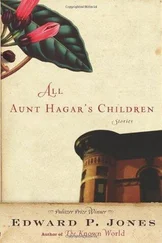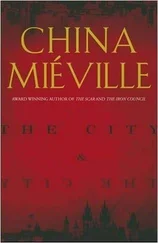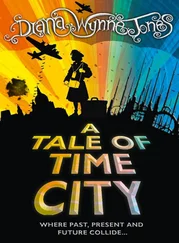In her sophomore year, she began to do volunteer work at a preschool for Harlem children. All of the children at the center took to her and she to them, but she was particularly fond of a precocious three-year-old girl, Clarine, who, having learned where Madeleine was from, insisted on calling her Miss Washton. Somewhere in her life, the child had been told that she was adorable, and she enjoyed standing before Madeleine and the other adults and slowly turning around so that they could get a good look at her in her dress. “See, see, see,” she would say as she turned, the hem of the dress in both her outstretched hands.
In that second year as well, she began seeing Curtis Wallace, an energetic junior from Norfolk. “They all act like they’re God’s gifts to the world, running around with their giant Afros and talking that trash about treating us like black queens, like the queens we used to be in Africa,” she once wrote Maddie. “How many damn queens could there be in one African village anyway? At least he has some humility and feels that he is just one among billions on this planet…. If and when we taste the ‘forbidden fruit,’ as they say around here, I’ll let you know. So far, though, he’s been hands off.”
They would walk the girl Clarine home in the evenings because often no one came for her. The child lived in a crowded two-bedroom apartment with at least a dozen other people, including some five or six other children. In all the times she and Curtis took the girl home, she had seen the mother only a few times, and each time the mother had stood in her bathrobe in the entrance to the kitchen smoking a cigarette and watching as Madeleine said good-bye to the girl. “Whatcha takin up?” the mother asked each time. “What’s your major?”
In Madeleine’s junior year, Clarine’s father killed the mother with four pistol shots into the heart. Madeleine could not remember what the mother looked like, and even when she looked down at the woman in her coffin, she could not connect the dead woman with the woman standing in her bathrobe. The girl, along with the other children, had seen her father shoot her mother. She never returned to the preschool, but Madeleine would go to the girl’s apartment each day after she had worked at the preschool. They would sit on the couch together, with Madeleine doing all the talking and the girl following the movement of Madeleine’s lips as if that were the only way she could understand what was being said. At first, she brought the child small gifts: barrettes, slippers, coloring books. But when she returned, the things would have disappeared, so she took to bringing only snacks, whatever Clarine could eat right there in her presence.
“Why did he do it?” Madeleine asked her aunt one night after she had returned from Clarine’s apartment and found everyone and everything in the apartment gone. Some in the building said the girl’s people had come from the South and taken her there, and others said the city government people had put all the children in a house for orphans on Staten Island.
“I don’t know,” Maddie said. “I only wanted her back, and knowin the why of it didn’t have the power to bring her back.” She had waited all Madeleine’s life for her to ask, had kept that nonanswer poised, and though she had been dozing beside the telephone watching the eleven o’clock television news, the nonanswer sprang from her as if she had been asked her name. “I don’t know,” Maddie said again. “You alone there?”
“No. Curtis is here. I’ve been drinking, and please don’t tell me I shouldn’t have,” Madeleine said.
“I’ve had my share. Why should I tell you different?”
“Why would he shoot her in front of the kids?” Madeleine said.
Maddie said, “He didn’t shoot her. He stabbed her. If you say the word, I’ll have Bo drive us up there tonight.”
“No,” Madeleine said.
“Then put Curtis on the phone. And put him on now.”
She struggled on at Columbia, spending much of her time in an unsuccessful effort to find Clarine. After graduation, she returned to Washington, where Curtis was finishing his first year in law school at Georgetown. He wanted to get married, or, at least, begin living together, but Madeleine said no, and she continued saying no even after she found she was pregnant.
She named the child Sam, after the brother she now knew only from pictures and telephone calls. She was not superstitious, but when she learned her son was retarded, she felt it some trick of God’s for giving the child a name that had originated with a man who had killed his wife. Against everyone’s wishes, she had the child put in the Children’s Center, the D.C. government’s Laurel, Maryland, facility for its retarded citizens.
Once or twice a month, Madeleine and Maddie and Curtis and Bo Cromwell, the man Maddie had settled down with, would drive out on Sunday to the center to see Sam Wallace. The government people had put him in the Martha Eliot Infirmary, for Sam could not walk, and, they would find later, he could not talk. They brought him ice cream or Nilla Wafers or some other treat. Maddie would set him on her lap and coo at him, while Madeleine or Curtis fed him. If he enjoyed what they gave him, there was never any indication from him. And had they brought him nothing, but simply kept him in his wheelchair and watched him the whole visit, he would have responded the same way.
Sunday became the only day off from researching the Why, and after visiting their son, Madeleine and Curtis would spend the rest of the day at Maddie’s or go off to a play or movie and restaurant. She had found work as a cataloguer at the Library of Congress, and every day after work she would walk the stacks of that library or of the Martin Luther King, Jr. Memorial Library for an answer to something Maddie had said did not matter because it would not have brought Agnes back. Everything she found about the Why, however remotely relevant, ended up at her apartment far up Connecticut Avenue. She taped thirty cassettes with Maddie alone, and then searched out people who had lived in the M Street neighborhood when the murder had occurred. Most of them did not remember her or the killing, but she taped them anyway.
By the time her son was one year old, her father had begun writing to her again. Ten- and twenty-page letters in the most beautiful handwriting of anyone she had ever seen, about nothing more than what his days were like and who were the men he spent his days with. And he’d send newspaper and magazine articles he himself had found of interest, each article neatly cut out and pasted on a piece of ruled notebook paper. And he’d send poems—“On Missing a Daughter’s 25th Birthday,” “The Rage of Being Caged,” “On Becoming a Grandfather,” “The Light Through the Barred Window.” She was, simply, captivated, and it was a very long time before she told anyone what he was doing. He spoke of everything in the world except the Why, and over time she lost the courage to ask. “I am thinking of you this day and all days…,” he began his letters.
A month after he left the sea for good and returned to Washington, Sam Williams found a wreck of a place on Martin Luther King, Jr., Avenue in Anacostia that had been a trophy shop, a place he thought would be perfect for a bakery. In a few months of working alone, he had the place gutted, renovated, equipped, and opened for business. The children in the neighborhood began calling him the donut man. He hired a young man and woman from the neighborhood and trained them in what he called the life wonders of baking. He named the place after his mother and aunt. The House of Agnes and Maddie. Fine Baked Goods .
Among the regular customers were some of the parishioners from the Cleansing Waters Baptist Church two blocks away, including the pastor’s daughter, Hazel Watts. She was one of the few people who never asked who Agnes and Maddie were. She came in one Saturday to pick up a cake she had ordered for a birthday party for the oldest member of the Usher’s Board, and, as had become his custom, Sam waited on her himself. He carried the cake — an orangeicing thing of one layer, two by three feet — to her station wagon.
Читать дальше












